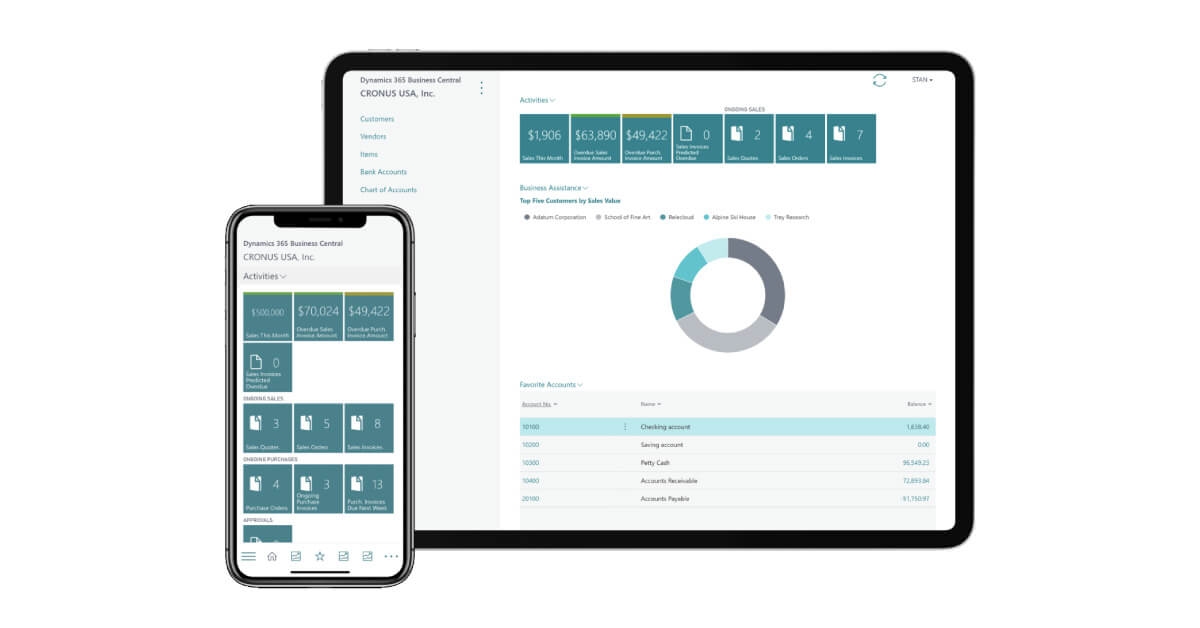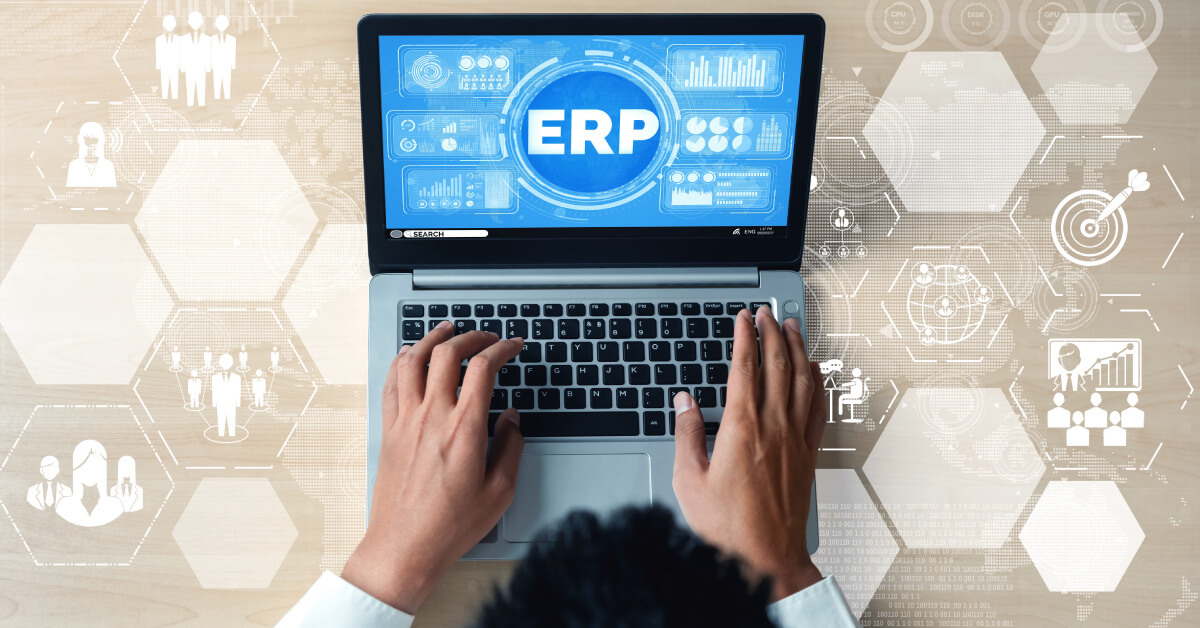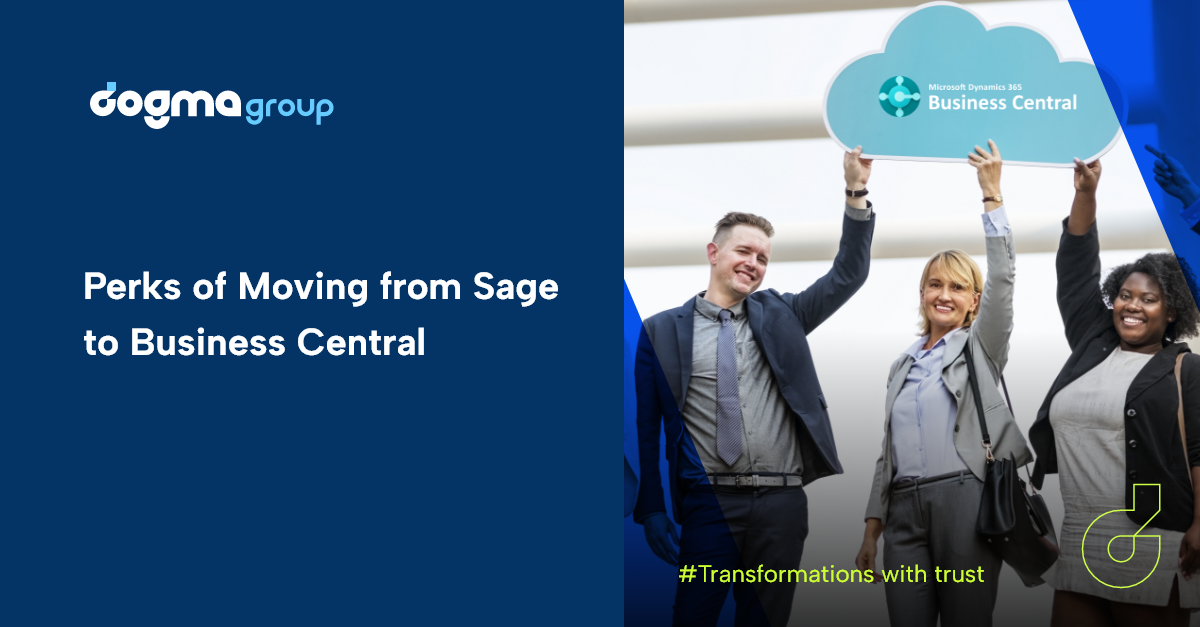Have you outgrown your existing Sage system but have barely caught up to the fact?
Or are you one of those business executives tormented by your legacy Sage solution nearing its end of life?
Then this blog is for YOU!
A little bit about Sage
For a long time, Sage has been a robust software system, mainly for hundreds of thousands of small and mid-sized businesses across the world. Owing to its features and capabilities focused on accounting and finance, Sage was definitely able to prove its own when it comes to fundamental ERP needs.
As the system was developed initially with the operational needs of businesses in mind, Sage was able to assist many businesses to realise their optimum potential in earlier days. But with the changing times, many Sage systems, like Sage 50, Sage 100, Sage 200 and Sage 300, haven’t been able to keep up with the modern ERP systems in terms of both functionality and product pricing.
Add to that the announcement of several Sage versions going EOL in recent years and you will be able to slightly understand why many companies are eager to make the switch to modern cloud-based ERP solutions like Business Central. The different iterations of Sage going EOL are namely Sage 50, Sage 100, Sage 200, and Sage 300.
The underlying reasons are plenty, but the key motivation seems to be the strategic shift in the service model of Sage, whereby it wants to switch from an on-premise deployment to one that’s cloud-based, like the majority of other ERP vendors these days.
When are these Sage systems going EOL?
Sage has formally announced that all on-premise Sage solutions will be phased-out soon and they will be transformed into a cloud-based service. To help existing Sage users make a smooth transition, they will also issue a 5-year extended licence in 2024, which effectively extends the use of these Sage systems till the end of 2029. But that’s it!
What this means is that Sage will gradually reduce the support services for these solutions, stop updates and patches, phase out service packs and remove all help desks by the end of 2024. This leaves you with a system that cannot be updated with new features and customised when needed. Even when it breaks down, you won’t be able to troubleshoot the issues through formal channels, which puts your business at a big risk.
So, what happens now?
While some of these Sage systems have already reached their EOL, like Sage 50 and Sage 200, back on 30th September 2021, a few still have some time left. And although it’s true that just because a certain Sage system is nearing its EOL doesn’t mean it will suddenly cease to function, you need to consider the disadvantages of using one of these legacy systems.
For starters, not only will your business processes become less agile and primitive, you will also have a hard time managing data and satisfying customers. What’s more, you are less likely to enjoy some of the key ERP features like reporting and forecasting, seamless integrations, meeting compliance, and cost savings. And, remember, legacy ERPs have limited mobility and are less user-friendly.
So, what options do you have?
Businesses currently using legacy Sage systems have four main options:
a) Do nothing
Obviously, the consequence of doing nothing about your EOL systems can eventually be catastrophic for your business. Sure, you can still run most of these systems until 2029 but think about the higher cost you incur due to constant system upkeep and lost market share. So, it’s only wise to switch to a better alternative when you still have time.

b) Upgrade to Sage Cloud
For many existing Sage users, upgrading to Sage Cloud could be an obvious choice. But they could explore other flexible options that are more future-proof because traditional Sage products are being phased-out.
Then there is also a matter of scalability when it comes to various Sage versions. For instance, Sage 50cloud will only support up to 50 users, while Sage 200cloud will accommodate no more than 200 users. Plus, they charge you based on the number of users, which can be tricky in terms of subscription costs.
c) Upgrade to another cloud ERPs
The other thing you can possibly do is upgrade to another cloud ERP but try to seek professional advice from technology consultants. Also, make sure you’re switching to a future-proof and scalable system with reasonable subscription fees and good security for all your data.
d) Upgrade to Business Central
Alternatively, and perhaps the best option, you can readily switch from Sage to Microsoft Dynamics 365 Business Central, a leading cloud ERP solution across multiple industries. It helps you manage your business by automating and streamlining processes across multiple departments, including finance, manufacturing, sales, supply chain, project management, and more.
Compared to Sage products, Business Central is richer in features and offers higher flexibility when it comes to the customisation of functionalities, even for highly specialised businesses. Not only is it fast to implement and easy to configure, but it also supports advancements in product or service design, development, introduction, and growth.
But that’s not all! There are many more benefits of upgrading to Business Central.
The 10 benefits of switching to Business Central from Sage
1. Scalable and Flexible

Using Business Central means having the flexibility to add as many users to the system as you need in a powerful cloud infrastructure that evolves with the size and scope of your business.
On the contrary, Sage systems support a limited number of maximum users. For instance, Sage 50 can accommodate up to 20 users and 1.5 million transactions per year, while Sage 200 supports up to 100 users and 9 million transactions. Similarly, Sage 300 allows up to 200 users and 10 million transactions.
Having these limitations means hindering business growth at some point and also making a hasty switch to other ERPs, increasing the chances of poor implementation.
Since scalability is one of the key attributes of a future-proof solution, switching to Business Central can be a great strategic move that will end up saving you a ton of time and money every time you expand your organisation.
Moreover, with over a thousand useful Business Central extensions and applications in Microsoft AppSource, such as SiriusPayroll365 and SiriusOctopus365, you can further streamline and scale up your ERP with much ease. The apps and extensions are highly flexible and customisable to add extra functionality without making any changes to the base code to best fit your specialised business needs.
2. AI-powered reporting tools

You can always count on Business Central to expedite reporting, improve forecasting, and receive real-time performance metrics across finance, sales, supply chains and warehouses, among other departments. This enables you to make informed and timely decisions. And, using its AI-powered intelligent apps, you can help those nearest to business issues resolve them faster, in addition to, gaining accurate forecasting capabilities in areas like cash flows, inventory and sales, and late payments. For companies of all sizes, Power BI in Business Central also enables data analytics and visualisation with easy-to-understand dashboards that generate broader business insights for everyone.
The same does not apply to Sage. Besides the EOL Sage systems having no integrated AI, most of their reporting capabilities are limited and focused mainly on accounting. Sage 50 offers minimal analytics and Sage 100, Sage 200 and Sage 300 have limited data management and analytics features. So, with Sage, you are not getting as much leverage from your business data as you are with Business Central.
3. Automation capabilities

Business Central helps you increase operational efficiency, boost productivity, improve resource allocation, and lower costs by automating most of your business processes and departmental functions.
Thanks to the integrated Power Platform, its automation capabilities include, but are not limited to, data collection and analysis, data lineage tracking, interactive reporting and visualisation options, predictive analysis and forecasting, workflow management and collaboration, cloud deployment and integration, customer service, and payment reconciliation.
As opposed to that, Sage 50, Sage 100, Sage 200, and Sage 300 systems have no automation capabilities, which puts them at a great disadvantage over Business Central. But an added advantage for Sage users when migrating to Business Central is that they gain wider automation of business processes without having to leave the familiar ecosystem of the Office tools like Outlook, Word, and Excel.
4. Wide and seamless integration options

The users of Business Central also enjoy seamless integration with other Microsoft business applications like Office 365. From accounting and human resources to marketing and sales, and everything in between, it can integrate even the custom apps and extensions from Microsoft AppSource to further customise your system. Thanks to these advanced integrations, getting holistic insights into key business elements like customer records, behaviour, decisions, transactions, inventory, orders, and shipping has never been so easy,
However, these Sage systems have little to no reach outside of their native accounting or finance features. Unlike Business Central, Sage 50, Sage 100, Sage 200, and Sage 300 do not have built-in two-way integration with Office 365 or other Microsoft apps. This means they need APIs or third-party tools for integration, which are only available at an additional cost starting from £10 per month.
5. Data security, compliance and future-proof

Every year, Microsoft invests over a billion dollars in developing its Dynamics 365 suite, ensuring that the solution is future-proof to ever-changing market dynamics and secure against any new system vulnerabilities. The built-in security mechanism routinely backs up all your data, stores them securely, and uses features like authorisation, authentication, data encryption, and auditing to ensure data safety.
Microsoft also releases regular Dynamic 365 updates, which fix bugs and improve the functionalities enabling you to stay competitive as well as secure for the foreseeable future. Whenever these updates are available, your system auto-updates with zero downtime.
However, with Sage, the users need to manually check and initiate the updates. The other thing is that businesses need to take their existing Sage system and its host servers offline during Sage updates, which poses even more operational delays and risks for your business.
While Sage 50 has security features like usernames and passwords, audit trail logs, account reconciliation, backup and restore, these features are limited and manual. When it comes to Sage 100, Sage 200 and Sage 300, you can enjoy a few more security features like user roles and access management, permission layers, product access, IP restrictions, login hours management, and multiple page layouts for each user profile. But these are nowhere near the wide range of data management and security features that Business Central typically offers right out of the box.
Business Central also ensures that you always meet regulatory and tax compliance standards like Making Tax Digital (MTD), which is useful if your business is spread globally. Sage also provides an MTD compliance feature but at an additional cost, while with Business Central, it’s free.
But most importantly, since support and updates for Sage will have phased out by 2024, the existing solutions will gradually become vulnerable to security risks and less compliant with changes in regulations and laws.
6. Mobility

The Business Central app for mobile allows your employees to handle multiple tasks on the go, particularly the ones on the field. From generating and emailing invoices to capturing and attaching pictures with the smartphone camera, they can work in the system even when they’re on the move. The decision-makers can also review real-time updates, analyse reports and KPIs, and monitor organisation-wide processes in real-time.
In contrast, these EOL Sage systems are not optimised for smartphones and do not have dedicated apps as Business Central does. Instead, they use paid add-ons to connect to Office 365, capture and upload invoices, and sync with the main system. For instance, Sage 50 used to rely on the Sage 50 Accounts app to provide access to accounting tools on mobile devices, while Sage 100 used the Sage 100 Fund Accounting app. Both these apps have been discontinued.
Sage 200, however, needs third-party add-ons to enable mobile functionality. Similarly, Sage 300 has three separate supplementary mobile apps— Sage Mobile Sales, Sage Mobile Service, and Sage Billing and Payment, which is better than no mobile app. Imagine the hassle for your frontline staff to use three different solutions to close a single deal. That’s why, even in terms of mobility, you’re better off using Business Central instead of Sage.
7. Cost of Ownership

You can subscribe to Business Central Essential at £52.80 or its Premium at £75.40 both on a per user per month basis with £6 per month for each additional user.
Compared to that, a standard edition of Sage 50 costs £72 per month for 2 users and £145 per month for 20 users but comes with limited modules and functionalities that are focused mainly on accounting and financial tasks. Both Sage editions have Office 365 integrations for a single user and additional costs apply for more users.
Sage 100, however, has a quote-based pricing model, which means the subscription and additional costs may vary depending on your needs. Sage 200 standard subscription, on the other hand, starts from £290per month for one user with an option to add more users for £16 per month. It comes with access to Sage 200 Financials Module, Sage Report Designer, and Excel Reporting tools. And, as far as Sage 300 is concerned, it is no longer available for purchase in the UK.
8. CRM capabilities combined with ERP solution

Business Central is not merely an ERP platform because it also comes with a CRM module, which includes functionalities like Contacts, Segmentation, Sales opportunities campaigns, Interactions, and Dynamics 356 for sales integration. These help you improve your customer experiences and foster better customer relationships by tracking interactions and creating insights on opportunities for upselling, cross-selling and renewals all within Business Central.
But Sage 50 lacks CRM capabilities and only comes with fundamental accounting modules such as General Accounting, Vendors and Purchases Customers and Sales, Inventory and Services in its Standard edition. For additional features like Payroll, Payments, Time and Billing, you need to subscribe to the Premium version. Sage 100, Sage 200, and Sage 300, however, come with Sage CRM that are limited to only three key modules: Sales, Marketing and Customer Service. And, here’s the catch—this is an optional add-on!
9. Warehouse, Project, Service, and Supply Chain Management

You can also benefit from other modules in Business Central to manage your supply chain, projects, warehouses, services, and manufacturing. These modules enable the automation of a wider range of workflows. For instance, the Supply chain management module helps automate sales and purchase orders, track item availability, listings of nonstock items, sales and inventory forecasting, create and offer substitute items, warehousing, and manage inventory movements and locations.
Furthermore, its Project management module automatically tracks resources, provides an overview of resource capacity, usage and availability, and tracks and approves billable employee work hours.
Moreover, with the Business Central Premium, you get two additional modules: Service and Manufacturing. The Service module supports your entire service process allowing you to record and track all your service item data, create service orders, plan and dispatch service teams, manage service contracts and warranty information, and define and monitor service prices.
Whereas the Manufacturing module helps you create the Bill of Material (BOM), manage routing and set up production capacity. It also enables you to place production orders, generate demand forecasting, plan production and capacity calendars, manage human resources, support subcontracting, and estimate shop loading with limited and unlimited capacity.
While Sage 50 lacks these modules, Sage 100, Sage 200, and Sage 300 come with some features that support the management of resources and projects, manufacturing and BOM but with a separate module. But all these Sage systems lack a dedicated Service management module.
10. Modules and functionalities

When it comes to different functionalities required for streamlining business processes, Business Central Essential has modules for financial management, sales, purchases, warehouse management, CRM, human resources management, service management, and project management. The Premium edition packs even more modules for service and manufacturing in addition to what’s already in the Essential. Both versions come with a free Power BI license, which gives you access to the most common features in Business Central and Power BI, such as creating, viewing, sharing and refreshing reports.
Additionally, with Power BI, you can view Business Central data in Power BI, view Power BI reports in the Business Central client, create reports and dashboards in Power BI for Business Central data, and use Business Central apps, like Dynamics 365 Business Central – CRM, Dynamics 365 Business Central – Finance, and Dynamics 365 Business Central – Sales, in Power BI. The reporting capabilities of Power BI essentially provide users with the flexibility to perform various cross-departmental reporting tasks and visualise Business Central data using custom dashboards, allowing you to get a deeper insight into your data.
In comparison, Sage 50 comes with modules for general accounting, vendors and purchases, customers and sales, payroll, inventory and services, projects, time and billing (with the Premium version). It certainly lacks a wider range of modules like Business Central.
But Sage 100 expands on the capabilities of Sage 50 by having additional modules for business intelligence, credit card processing, CRM, and global eCommerce. It also has separate modules for some lightweight manufacturing, distribution and project management but duly lacks one for service management.
Likewise, Sage 200 comes with financials, commercials, project accounting, and manufacturing modules, and Sage 300 with supply chain management, distribution management, retail and commerce, human resources, and financials. But except for the finance module, all others belong to the third party.
Ready to switch to Business Central?
If you are still using these legacy Sage solutions, it’s about time that you migrate from Sage to Business Central. Our experienced ERP experts will address all your reservations regarding data migration, business process mapping, and implementation costs to help make a successful transition.
You can make the switch from your old ERP to Business Central from £10,000 in less than three weeks. If you are starting from scratch, the price starts at £5,000 and the project begins within a week.


